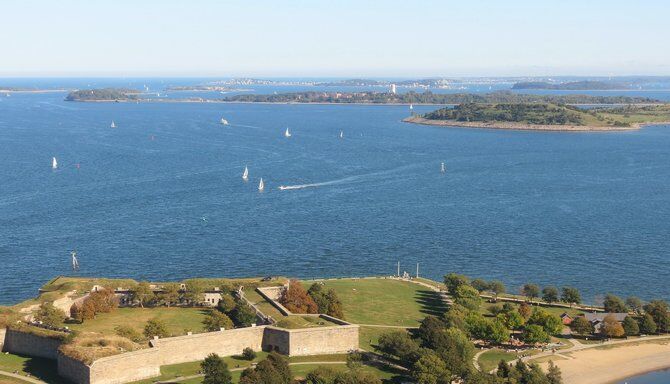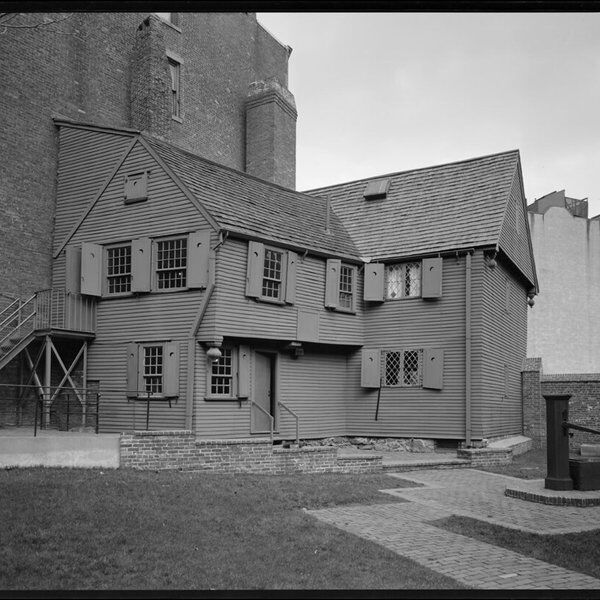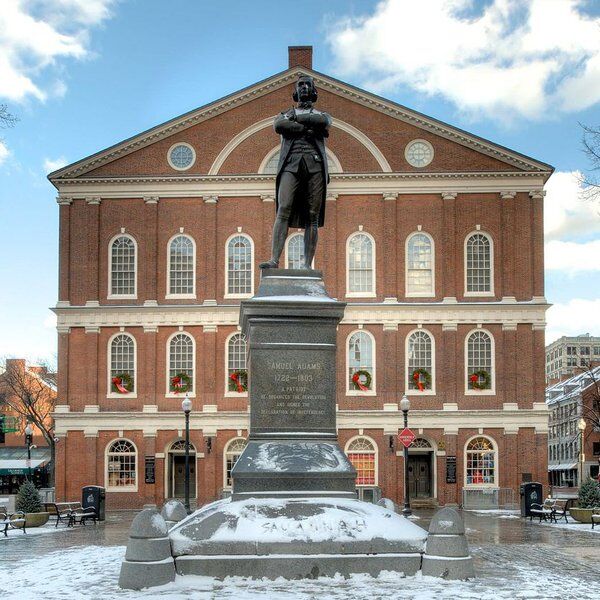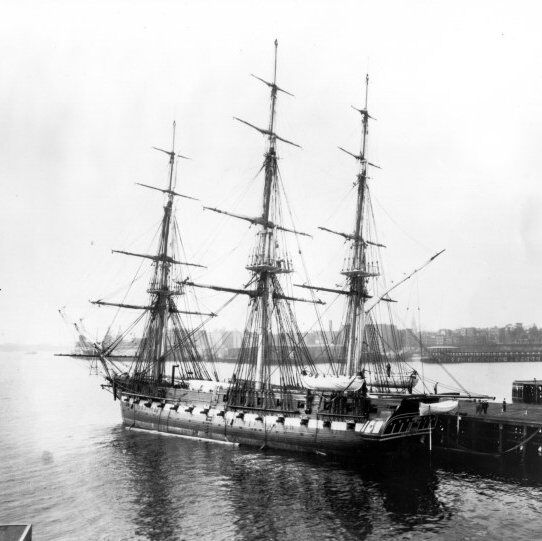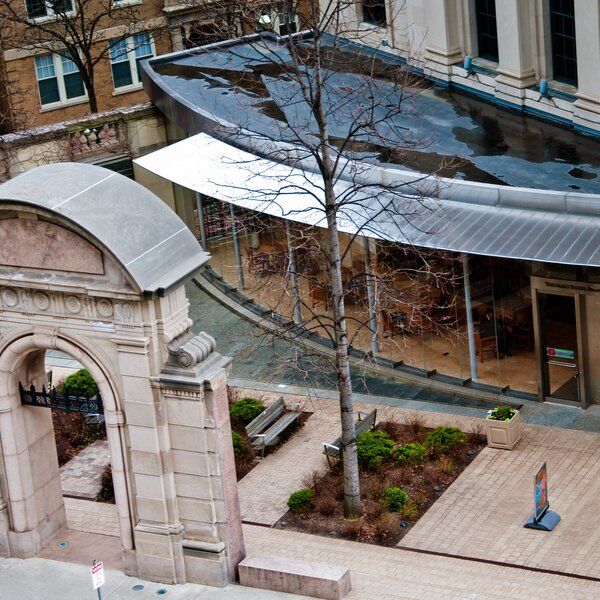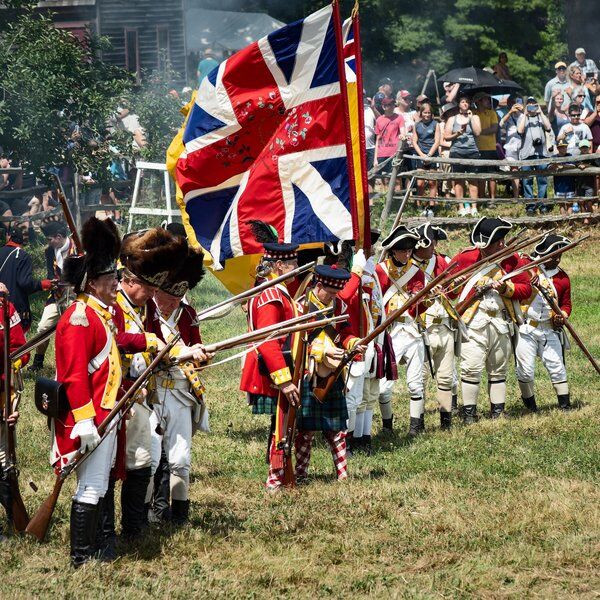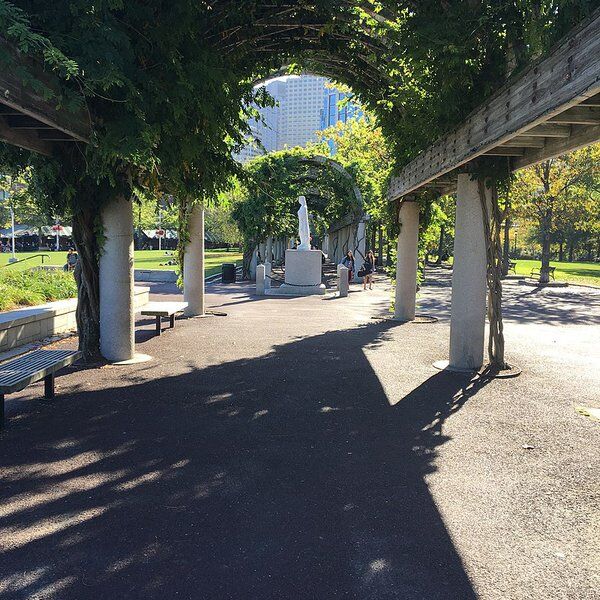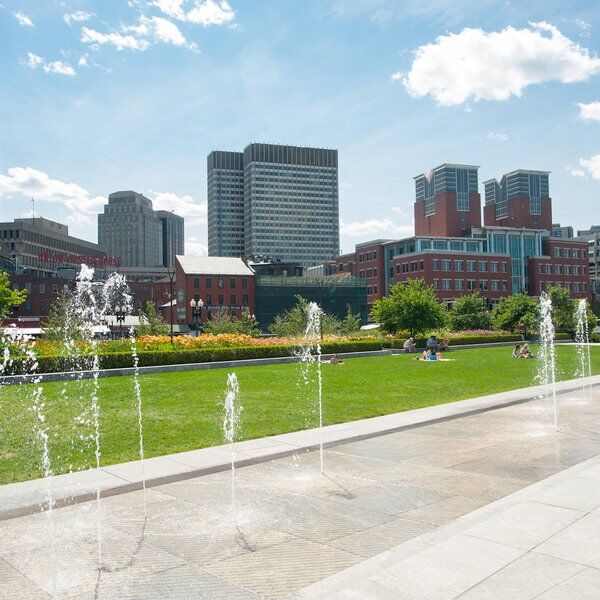Discover Fort Independence in Boston
Fort Independence is an impressive granite structure on Castle Island in South Boston that has been protecting Boston Harbor since the early 17th century. In 1970 Fort Independence became listed on the National Register of Historic Places and today it is part of Castle Island State Park managed by the Massachusetts Department of Conservation and Recreation.
This surrounding park, once a separate entity, is now connected to the mainland due to land reclamation efforts, making it accessible to visitors by foot or vehicle. Today, Fort Independence and Castle Island are a highlight of a visit to Boston. The fort is rich in history and the park has lots of recreational activities, which make it a firm favorite for families.

Fort Independence History
Fort Origins
Fort Independence originated in 1634 when Governor John Winthrop ordered the construction of the first fortification on Castle Island. This initial structure, known simply as "The Castle," was a rudimentary fort designed to defend Boston from potential sea attacks. Over the next few decades, the fort underwent several reconstructions and upgrades, driven by the constant threat of foreign invasions, particularly from French naval forces.
By the late 1600s, the fort had evolved into a more substantial structure called Castle William, named after King William III of England. Castle William played a pivotal role during the American Revolution, providing refuge for British forces amid the growing unrest in Boston. However, as tensions escalated and the Siege of Boston loomed, the fort's strategic importance became even more evident.
Becoming Fort Independence
March 1776 marked a turning point in the history of Castle Island. As General George Washington's Continental Army fortified Dorchester Heights, British forces at Castle William realized the disadvantages of their position. After a failed attempt to launch an attack on the Continental Army, the British evacuated Boston, leaving behind a burning fort and a city about to be freed.
In the aftermath, American forces rebuilt the fortifications on Castle Island, renaming the site Fort Adams. This new fort served various purposes over the years, including as a state prison. It wasn’t until 1797 when the fort was officially renamed Fort Independence by President John Adams.
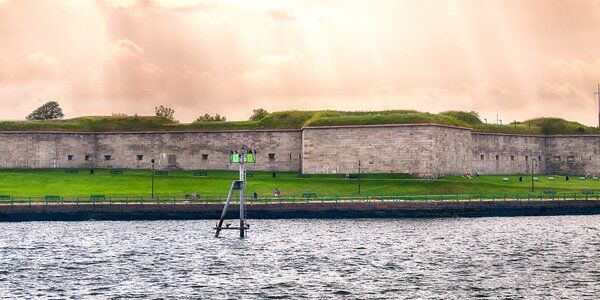
Fort Independence's Modern Granite Structure
The Fort Independence that visitors see today is a granite bastion fort, constructed between 1834 and 1851 under the direction of Colonel Sylvanus Thayer. This structure, with its thick walls and strategic positioning, was designed to provide harbor defenses for Boston. Contrary to popular belief, the granite used in its construction was not sourced from nearby Quincy but was instead hauled by boat from quarries on Cape Ann, resulting in financial savings for the project.
Throughout the 19th and early 20th centuries, Fort Independence remained an active military site, playing roles in the Civil War, Spanish-American War, World War I, and World War II. It served as an armory, training ground, and coastal defense post.
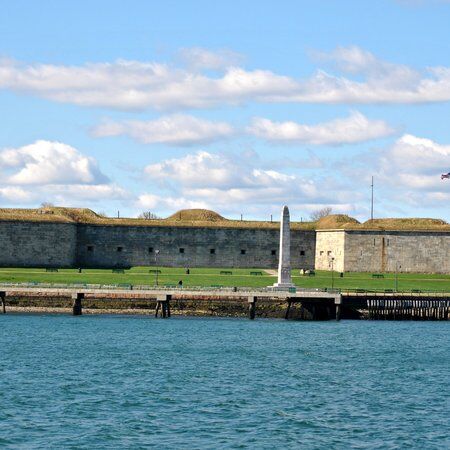
Fort Independence and Edgar Allan Poe
One of the most intriguing tales associated with Fort Independence involves a duel between Lieutenants Robert F. Massie and Gustavus Drane on Christmas Day, 1817. Massie, a well-liked officer, was tragically killed, and folklore suggests that his fellow soldiers exacted a grim revenge by entombing Drane within the fort’s walls.
While this tale likely inspired Edgar Allan Poe’s "The Cask of Amontillado," the reality is less exciting—Drane continued his military career, and Massie’s remains were later moved to Fort Devens. This story, however, adds a touch of Gothic mystery to the fort’s history.

Key Features of Fort Independence
Fort Independence has witnessed countless events, from legendary duels to everyday military life. Here are some of the highlights that make this site so fascinating:
The Fort's Entrance
The entrance to Fort Independence is a reminder of its strategic purpose. Featuring two massive doors and a sliding metal gate, this entrance was designed to trap any intruders. Inside, you’ll find granite cutouts where soldiers could fire on trapped enemies. Just beyond the entrance are living quarters, where officers and their families would have lived during the fort’s operation.
The Parade Grounds
At the heart of the fort lies the parade grounds, where soldiers once drilled and gathered. These grounds were also the site of deep wells, dug nearly 100 feet into the earth to provide fresh drinking water—a crucial resource for the fort’s isolated location on Castle Island.
The Bakery
The fort’s bakery, restored to its Civil War-era condition, is a fascinating stop on any tour. This bakery once produced daily bread for over 500 men, using local produce and supplies from civilian market boats. The original brick floor, firebox, and oven are still visible.
Bastions A and B
Bastion A, accessed via a short tunnel, was designed to defend the harbor from enemy ships and as a result housed 15-inch Rodman cannons. Although the original cannons are gone, a replica remains so visitors can gain an understanding of the impressive nature of the fort’s defenses. The view from Bastion B overlooks Boston’s outer islands and is marked with lighthouses and historical points of interest.
The Ramp and Ramparts
The ramp leads to the fort’s ramparts on the upper level and culminates in panoramic views of Boston Harbor. Lined with flags from various colonial militia units, the ramp is the only path for wheeled vehicles. The fort's strategic position made it a key player in defending the harbor.
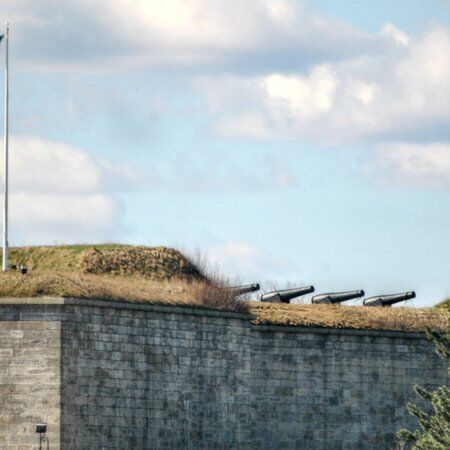
Things to Do at Fort Independence
Fort Independence isn’t just about history—it’s also a place where you can engage in a variety of activities that make the most of its stunning location and fascinating past.
Guided Tours
From Memorial Day to Labor Day, the fort offers free guided tours every weekend from noon to 3:30 p.m. These tours provide an in-depth look at the fort’s history, architecture, and the stories that have shaped it over the centuries.
On Thursday evenings in June and July, the fort also hosts Twilight Skyline Viewing, where you can enjoy the breathtaking views of Boston’s skyline as the sun sets.
Exploring the Fort’s Grounds
Take a self-guided tour around the fort’s perimeter to appreciate its construction and strategic location. As you walk along the ramparts, you are treated to panoramic views of Pleasure Bay, Dorchester Harbor, and iconic Boston landmarks like the John F. Kennedy Presidential Library and the Old North Church Tower.
Educational Programs
Throughout the summer, the fort hosts a variety of educational programs for visitors of all ages. These programs delve into the fort’s military history, the lives of the soldiers who served there, and the broader history of Boston Harbor.
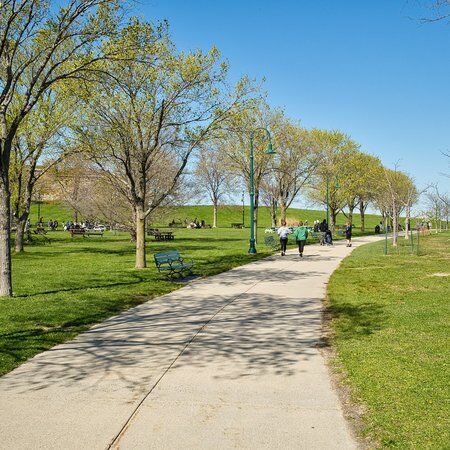
Castle Island State Park
Surrounding Fort Independence is Castle Island State Park—22 acres of beautiful and historic public space. The park is a popular destination for locals and visitors, with its relaxing picnic areas, many of which offer views of the water. Bring a cooler and enjoy a meal in the shade, or visit the playground inspired by the fort's five-point star-shaped design, which is perfect for kids to burn off some energy.
Speaking of burning off energy, the State Park also has well-maintained walking and biking paths. For a leisurely stroll, try the Castle Island Loop, which circles the fort and offers great views of the harbor. For a longer trek, take the Pleasure Bay Loop, which extends around the bay and provides ample opportunities to enjoy the natural beauty of the area.
If you’re visiting in the summer, take advantage of the park’s proximity to M Street Beach and Carson Beach. These beaches offer plenty of shoreline for swimming and sunbathing, making them ideal spots to cool off after exploring the fort, or enjoying a trek through the Castle Island State Park.
The site also features an obelisk dedicated to Donald McKay, a renowned shipbuilder, a small marina, and a fishing pier where visitors can enjoy a spot of fishing or hire a boat for the day.
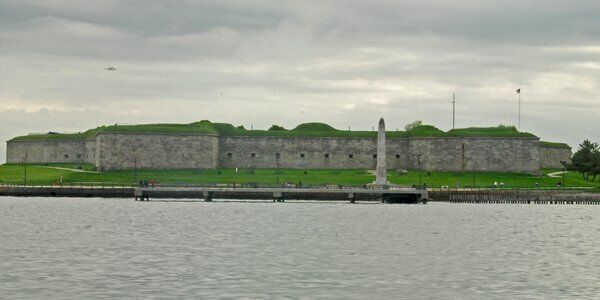
Visiting Fort Independence
Fort Independence is open to the public from Memorial Day through Labor Day. Castle Island State Park is designed to be accessible for all visitors. The park features accessible picnic areas, restrooms, and a trail around Pleasure Bay. Beach wheelchairs are available at Carson Beach, and a beach mat provides easy access to the water. The park also offers facilities like first aid stations, restrooms, and rinsing showers, ensuring a comfortable and convenient visit.

Explore Beyond Fort Independence in Boston with CityDays
While Fort Independence and Castle Island State Park offer a wealth of history and outdoor activities, there’s even more to explore in Boston with CityDays. Our scavenger and treasure hunt tours provide a unique and interactive way to discover the city’s hidden gems.
These tours are perfect for team-building exercises, combining fun challenges with fascinating insights into Boston’s past and present. For example, beginning at Christopher Columbus Park, our 2 km Finding Freedom trail guides visitors through some of the oldest and most storied parts of the city, including landmarks such as the Old State House, Post Office Square, and Quincy Market.
For more information on CityDays’ scavenger hunts in Boston, and all over the world, click here: Boston Scavenger & Treasure Hunts | CityDays.
